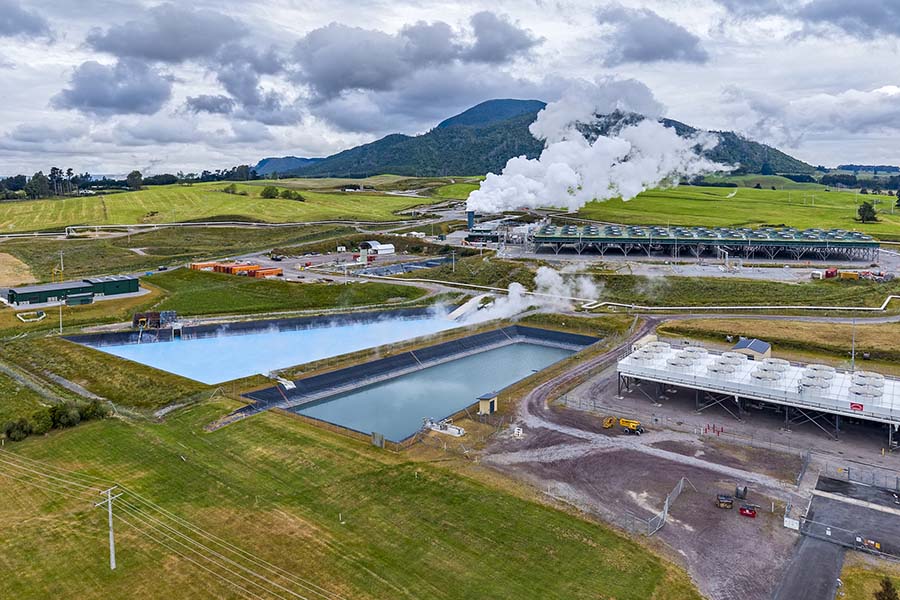Imagine drilling a deep well and hitting not oil, but a nearly endless supply of superheated water—hot enough to heat a whole town! That’s the incredible reality of deep geothermal energy, reaching directly into the raw, powerful heat of the Earth’s interior to make our lives warmer, richer, and safer. In fact, for those of us dreaming of hosting our very own Strawberry Festival in January, it’s a genuine game-changer.
From Steam Vents to Strawberry Pots
For anyone living in a geothermal “hot spot,” the signs of the Earth’s power are part of the local landscape: the plume of steam rising from a hillside on a cold morning, the warmth radiating from a natural hot spring, or the distinct sulfur smell in the air. For a long time, these features have often been seen as curiosities—good for old-fashioned “water cures” and local tourism, but not much else.
But what if that immense, endless heat—currently venting unused into the atmosphere—could be captured and put to work in our everyday lives?
This is the core concept of a deep geothermal greenhouse. It all starts with drilling a production well to tap directly into that underground reservoir of superheated water. That dangerously raw energy is then tamed and refined through a heat exchanger, which transfers the heat to a separate loop of clean water—kind of like a car’s radiator working in reverse. The same energy that once erupted through a steam vent on a riverbank is transformed into the perfect, 75-degree environment for growing a luscious, red strawberry in the middle of a blizzard.
The Key Ingredients: Wells and Heat Exchangers
At its heart, a deep geothermal system is actually a remarkably straightforward heat-moving machine. It uses heavy-duty hardware to pull heat from deep within the Earth and deliver it safely and efficiently to the target—in this case, a greenhouse. The two most essential pieces are the wells and the heat exchanger.
The Wells: Tapping the Source
To access a deep geothermal reservoir, two main wells are typically required. The primary (production) well is drilled down into the geothermal “hot spot”—often a mile or more deep—to bring superheated water or steam to the surface. Once the heat has been drawn from the geothermal fluid, a second well (injection well) returns the cooled water deep underground. Re-injecting the water is what makes this system sustainable, as it recharges the natural reservoir for continuous use.
The Heat Exchanger: Protecting the System
The raw water from a geothermal reservoir—often a superheated brine—is full of dissolved minerals and gases that can be highly corrosive. Pumping this fluid directly through a greenhouse’s standard heating system would quickly destroy pipes and radiators through corrosion and scaling.
The solution is a plate-and-frame heat exchanger, a device designed for maximum thermal transfer in a compact space. In this device, a series of thin, corrugated metal plates, usually corrosion-resistant stainless steel or titanium, are stacked so that the hot geothermal brine flows on one side of each plate, as clean greenhouse water flows on the other. Heat transfers instantly through the plates without the fluids ever making direct contact. The exchanger protects the greenhouse’s plumbing while delivering a consistent supply of clean, hot water for the heating system.
Putting the Heat to Work: Direct Use vs. Power Generation
Once the geothermal energy has been extracted, it can be used as a direct source of heat or as a fuel for generating electricity. The temperature and pressure of the geothermal resource determine which path is most viable.
Heat for...Heating!
Greenhouses usually rely on direct-use systems, where the heat extracted from the geothermal fluid via the heat exchanger is simply used to warm the growing environment. This is typically done by simply circulating the clean, heated water through pipes embedded in the greenhouse floor or through radiators.
The applications for direct-use heat are broad. Beyond greenhouses, this same method can be used to heat entire business districts, keep public sidewalks free of snow, and support aquaculture or food dehydration facilities.
Heat for Electricity: The Binary Cycle
Not so long ago, generating electricity required very high-temperature geothermal reservoirs (over 360°F) capable of producing high-pressure steam to spin a turbine. However, innovative binary cycle technology has made it possible to generate electricity from much more common low-temperature resources.
Instead of trying to boil water to form steam, the system uses the geothermal fluid to heat a secondary (“binary”) liquid that has a much lower boiling point. This second liquid flashes into vapor at a lower temperature, and that vapor is what drives a turbine to generate electricity. This process is how the Chena Hot Springs plant in Alaska uses its 165°F water to provide power for its entire resort and greenhouse operation. This technology makes small-scale, commercial power generation viable in many more locations, allowing a single geothermal resource to provide both heat and electricity.
Deep Geothermal Around the World
While deep geothermal resources are geographically rare, the countries that sit atop these geological hot spots have become world leaders in harnessing this powerful, clean energy. Their large-scale success provides a proven roadmap for what is possible.
The Volcanic Pioneer: Iceland
No country is more synonymous with geothermal energy than Iceland. Sitting directly on the Mid-Atlantic Ridge, a major tectonic plate boundary, the entire island is a geothermal hotspot. Iceland has embraced this natural advantage to become a global pioneer.
- Geothermal power plants generate approximately 30% of the nation’s electricity.
- An incredible 9 out of 10 homes in Iceland are heated using direct geothermal heat.
This abundance of cheap, clean heat is the foundation of their thriving year-round greenhouse industry, allowing them to grow a significant portion of their own fresh produce in a subarctic climate.
The Ring of Fire Powerhouses
The immense geological activity along the Pacific Ring of Fire has created vast geothermal potential for many countries.
- Indonesia and the Philippines are geothermal giants, consistently ranked among the top producers of geothermal electricity in the world, second only to the United States.
- Turkey, another country with significant geothermal resources, has focused heavily on direct-use applications. It’s a world leader in geothermal agriculture, with massive greenhouse complexes dedicated to year-round tomato production.
- Other major players include New Zealand, which taps into its active Taupō Volcanic Zone, and Mexico, which harnesses the power of the Trans-Mexican Volcanic Belt to generate significant amounts of clean electricity.
Clearly, where the resource exists, deep geothermal is a powerful and reliable engine for both sustainable energy and innovative agriculture.
The Bottom Line: Pros and Cons
Deep geothermal is a powerful technology, but it comes with a distinct and significant set of trade-offs. Understanding them is key to understanding its role in the energy landscape.
Pros
- Powerful and Consistent: Once a reservoir is tapped, it provides a massive and reliable source of energy that is not dependent on the sun shining or the wind blowing.
- Low Operating Costs: After the high initial investment in drilling, the fuel—the Earth's heat—is free, which dramatically cuts long-term energy costs.
- Clean and Sustainable: It's a renewable resource that can virtually eliminate CO2 emissions from heating and provides a source for clean electricity generation.
Cons
- Geographically Limited: This is the biggest drawback. The technology is only viable in rare geological “hot spots” where intense heat is close to the surface.
- Extremely High Upfront Cost: The expense of geological surveys and drilling deep production wells is a massive financial barrier for all but the largest commercial or municipal projects.
- Not a DIY Project: This is industrial-scale engineering that requires highly specialized equipment and certified technicians.
Looking Ahead
Deep geothermal is an impressive solution for those who are lucky enough to live on a geological jackpot. So, what about everyone else? Is there a way to use the ground’s heat even if you’re not cozying up with an active volcano?
The answer is yes. The next chapter explores the much more widely applicable technology of shallow geothermal—a system that uses the “Earth as a Solar Battery” right in your own backyard.




